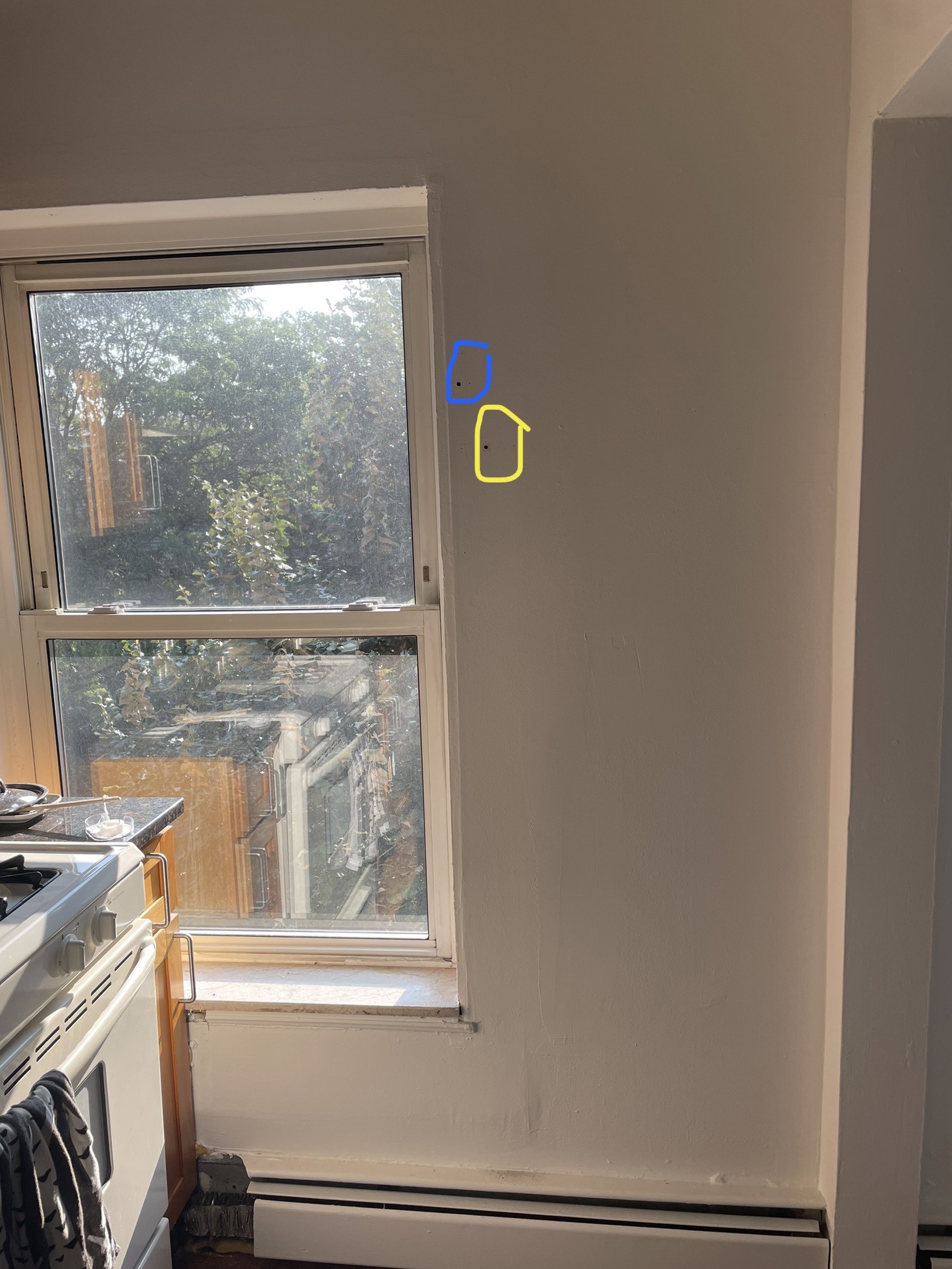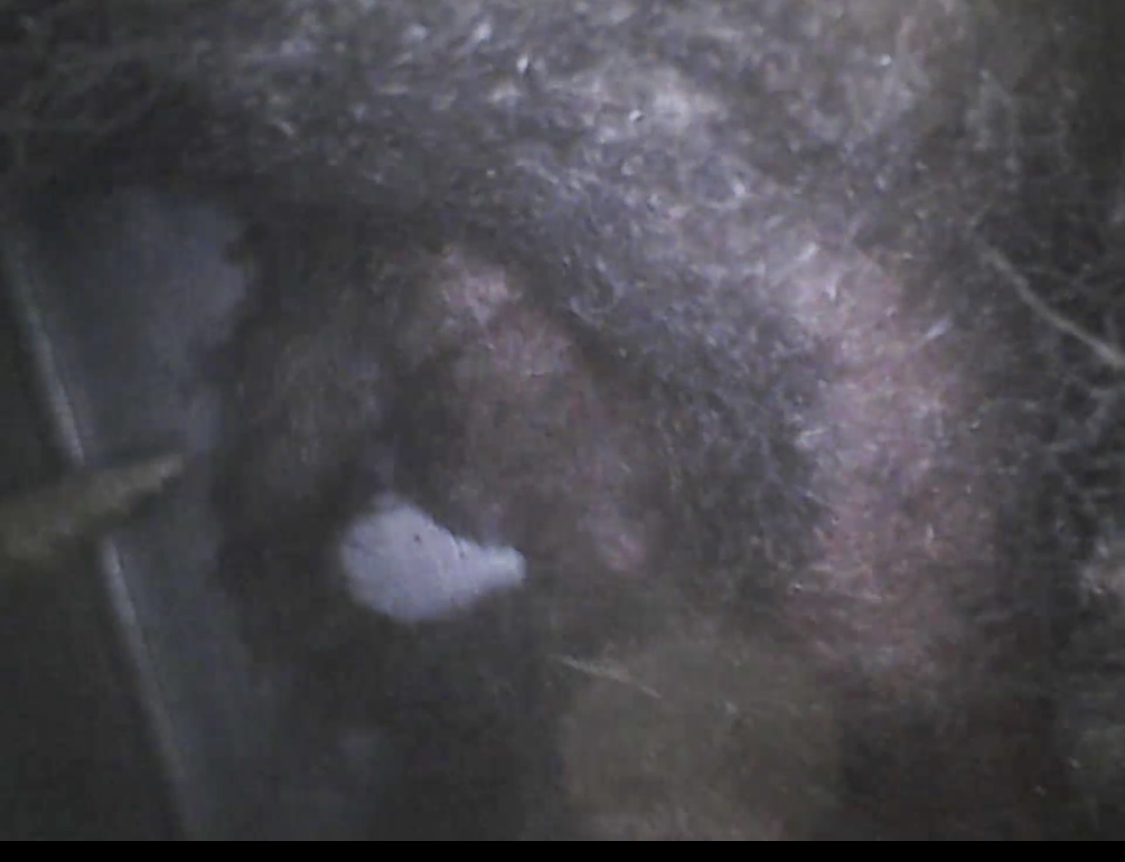Edit: fixed diagram
I’ve read a few similar threads but don’t think any are quite the same question.
I want to install some shelves in my rental apartment, in the kitchen next to a window. The shelves are about the width from the window on the left to the doorframe on the right, so I don’t have much choice in the horizontal screw location. I was going to put them into drywall with anchors because the studs weren’t where I would have needed them to be. When drilling the first hole, I met resistance, pushed a little thinking the drill was entering a stud I hadn’t expected (in retrospect probably dumb), and then punctured something, at which point I stopped drilling. I got an endoscope and saw that I had drilled through metal with wood behind it.
The window just to the left has what I think is metal corner bead around it, but I was drilling next to that into the drywall (plasterboard? Not sure), and the metal I hit was behind that whereas the corner bead is at the surface. I was concerned the metal might have been a nail guard, but there is no outlet on that wall, and anything going horizontally through a stud at that location would just end up at the side of the window. There is a gas stove in the room, though not on the same wall (shown in picture), and the apartment is on the top floor. A neighbor who used to own the building said they were 99% sure there’s nothing in the wall to watch out for, but it’s a old building and I didn’t want to rely on that.
I did some searching and thought what I’d hit might be part of a j-flange around the window rather than just L-shaped corner bead, and drilled a few more small holes further down the wall directly under the first one to confirm that I met the same resistance in other locations. Then I drilled another hole to the right of and below the first, and used the endoscope to see that behind the drywall was a metal corner with a screw coming into it from the wood on the left, and insulation. I’ve drawn my current understanding of the cross-section of the wall.
Are these metal studs? Or some kind of metal window frame? The apartment has wooden studs elsewhere. My main question is whether it is safe to put a long screw into the hole I drilled—it would extend about 3/4” into the wood behind the metal layer. But I’d also like to understand what I’m seeing in the wall.
Images:
the wall in question. The hole on the left (blue) is the one I want to put a screw into, the one below and to the right (yellow) is one I drilled to get a better look.
inside the hole, showing punctured metal with wood behind it.
inside the second hole—a metal corner
also inside the second hole, showing a screw coming in from the left where I think there is wood, and insulation
cross-section of the wall as I understand it (edited) showing where each of the holes I drilled are. The hole on the left is where I would want to put a screw.
Update: installed the shelves at this location without an issue 🎉






